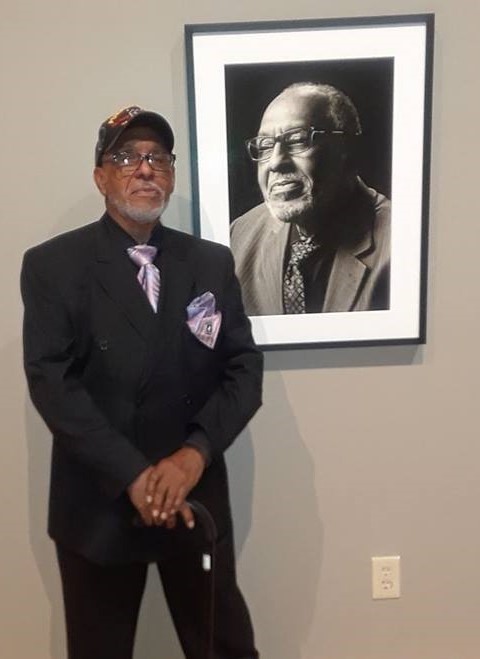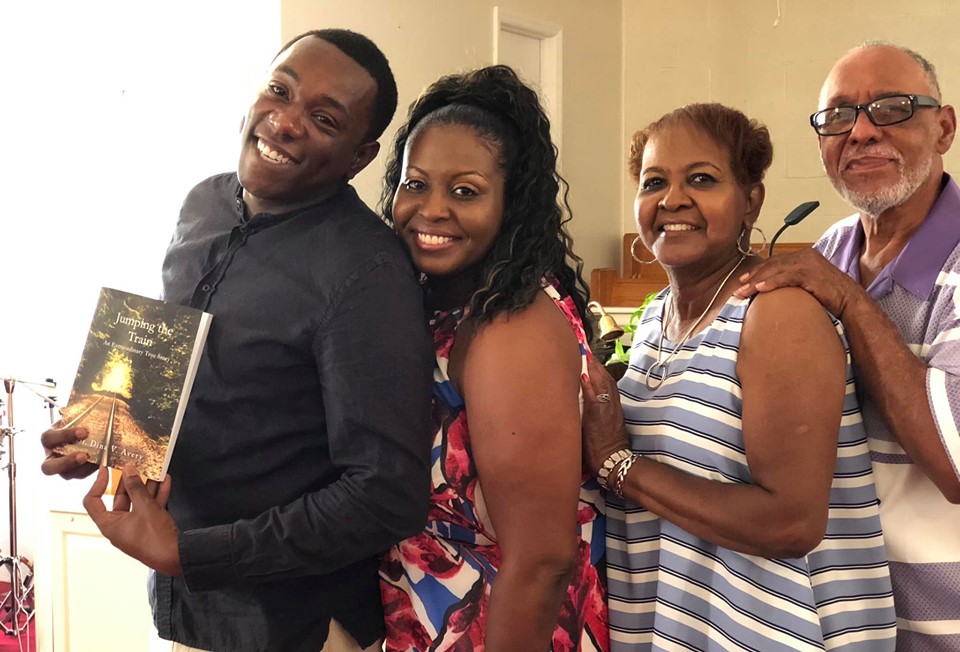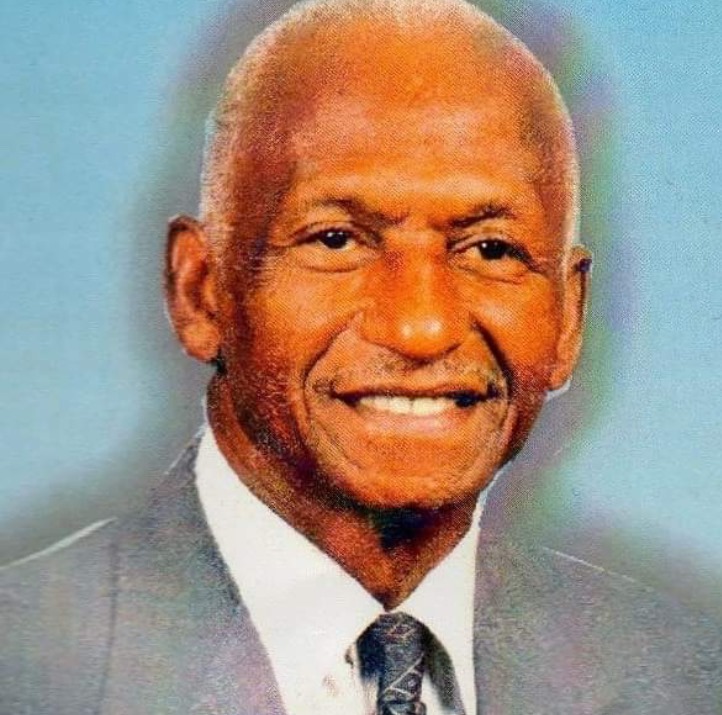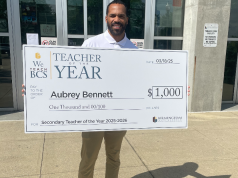By Erica Wright
The Birmingham Times
Dina Avery comes from a bloodline of steadfast people, including her father, Charles Avery Jr., who was one of the young people in the 1963 Birmingham Campaign for Civil Rights and part of the Children’s Crusade, when more than 1,000 students skipped classes and gathered at Sixteenth Street Baptist Church to protest segregation.
Her great-great-great-grandfather founded the Rushing Springs neighborhood in Tarrant City, a safe haven for former slaves and other blacks known as “The Holy Ground.”
To honor her forebears, Avery wrote “Jumping the Train: An Extraordinary True Story” about her family’s history from slavery to the present, including her father’s participation in the Children’s Campaign. The book, released on August 1, is available at Amazon.com in paperback and e-book formats.
“The book is really a celebration,” said Avery, who has a Doctor of Health Science degree with a concentration in global health. She currently is an assistant professor and regulatory affairs specialist with the University of Alabama at Birmingham (UAB) School of Health Professions and an associate scientist with the UAB Minority Health Disparities Research Center.
“Before my grandfather, Charles Avery Sr., died in 2013 [at age 96], I came home from Atlanta, [Ga.], and asked him, ‘What is your biggest regret?’ He said, ‘I should have written a book’ and talked in detail about how [the family] has so many memories.”
Avery,42, remembered her grandfather saying, “Look at me now. I’m about to go to the grave.’ My response to him: ‘Let’s start your story today.’ [From that moment], I started writing [our family’s] story on envelopes.”
“Jumping the Train,” more than 10 years in the making, details stories told to Avery by her grandfather, as well as interviews with family members and descendants of the slave master who owned the Averys for more than 100 years during slavery.
“The book highlights how we are descendants of runaway slaves. It highlights our journey from the slave plantation through each decade, beginning in the late 1800s up until now,” said the author. “The first part of the book is a word from my grandfather; it is his own spoken words. There’s a section of the book in which different people from the community speak about Rushing Springs and Ketona, [a neighborhood in the Tarrant area where Avery’s family has lived since after slavery]. We really are one family, and that is what the book talks about: one family’s journey.”
Avery added that “Jumping the Train” is also about the importance of oral histories. At one point, the family was in Chesterfield County, S.C., and got separated. Many family members were enslaved in Bibb County, Ala., as well.
“You can’t depend on a computer database to tell you what went on 100 years ago if you don’t have your oral history,” the author explained. “So many families have unique stories, but [those stories] shouldn’t go to the grave. I think it’s important that we celebrate our history. … When you know where you have come from, it should push you and motivate you toward success. When you know your history, … it will affect how compassionate you are toward people, how you treat people.”
Telling the Story
Dina Avery grew up in the Ketona and Rushing Springs communities in Birmingham, known as Tarrant City. Her grandfather not only shared his stories but also disclosed names of people he knew would be important for the book.
“We would sit at the kitchen table or in the bedroom [of my grandfather’s home] in Ketona,” Avery said. “He was very detailed, even in how the story should flow. He was very, very thorough. He wanted it to be global, and he had strict instructions. He didn’t want the book to be too large, so I probably interviewed fewer than 20 people, but it’s not just interviews. I used those interviews to tie it all together and make one story.”
Avery’s grandfather passed away on June 22, 2013, but she set her mind to finishing the book, which was his dream.
“I even reminded him on the day of his death that I would keep my promise and finish the book,” she said.
As part of her interviews, Avery sent out more than 80 letters to descendants of the slave masters who had owned her family.
“Through oral history, my grandfather taught me about the area based on what his grandfather taught him. I found a map from the 1800s and was able to pinpoint where my grandfather was talking about. He taught me what to look for, such as the railroad tracks, so I knew I had to focus my search around churches in the area. My letter was simple: it just said I was doing research and trying to connect with [who owned the Averys] and my family [members that] were slaves in the area.”
The letter would eventually reach descendants of the slave masters who owned the Averys, she said.
“From there, the person named Hector in the book contacted me and invited me to where he lived in Bibb County, Ala.,” Avery said. “We met at a restaurant, where he and his family welcomed my father and me with open arms. We even went to his home and stayed there for hours. On a different occasion, I went down there and let them read my first draft.”
Making Connections
Working on “Jumping the Train” helped Avery and her father, Charles Avery Jr., connect with family they didn’t know they had. In August, they traveled to Chesterfield, S.C., to meet with family and promote the book.
“I was able to go to that town, and a lot of family decided to go with us,” Dina said. “We were able to reconnect, and I think that’s almost unheard of. We have been separated for well over 100 years, but we reconnected on August 10.”
Charles Jr. said, Dina’s research enabled them to unite with their family in South Carolina: “About a year ago, she sent a letter to funeral homes and historical places in South Carolina. The head of the funeral home got back with us, told us there were plenty of Averys, and asked when we wanted to meet. When we went [to the funeral home], there were Averys sitting around in chairs, and we shared our stories.”
The father and daughter joined not only with distant family members but also with descendants of their family’s slave owners.
“My dad and I went to meet with descendants of the Avery slave masters,” Dina said. “When we met each other, our story was not one filled with hate. We met together at the table and acted like we were brothers and sisters in Christ despite our differences. I don’t agree with what their family did, but they were willing to help me finish this book project. They became my prayer partners, and we still check on each other. They offer me encouraging words because they want this book to be a great success, too.”
Bringing a Dream to Life
Dina Avery’s determination helped bring her grandfather’s dream to life.
“I’ve had people say to me on this journey, ‘Why are you doing this? You don’t have time for it.’ But if you have a dream, you just move forward. If God is pushing you toward a dream, toward a goal, go ahead and accomplish that, and don’t worry about what people may say.”
Avery also believes “Jumping the Train: An Extraordinary True Story” is particularly important given today’s political climate.
“Despite your views, religion or whatever differences you may have, you should still be able to sit down together and talk to one another in a respectful manner,” she said. “We respect each other, and we love each other. It’s genuine love.”
To order “Jumping the Train: An Extraordinary True Story,” visit Amazon.com and search for the book title. To learn more about the book and Dina Avery, visit www.dinaavery.com or follow on Instagram @dr.dinaavery.












